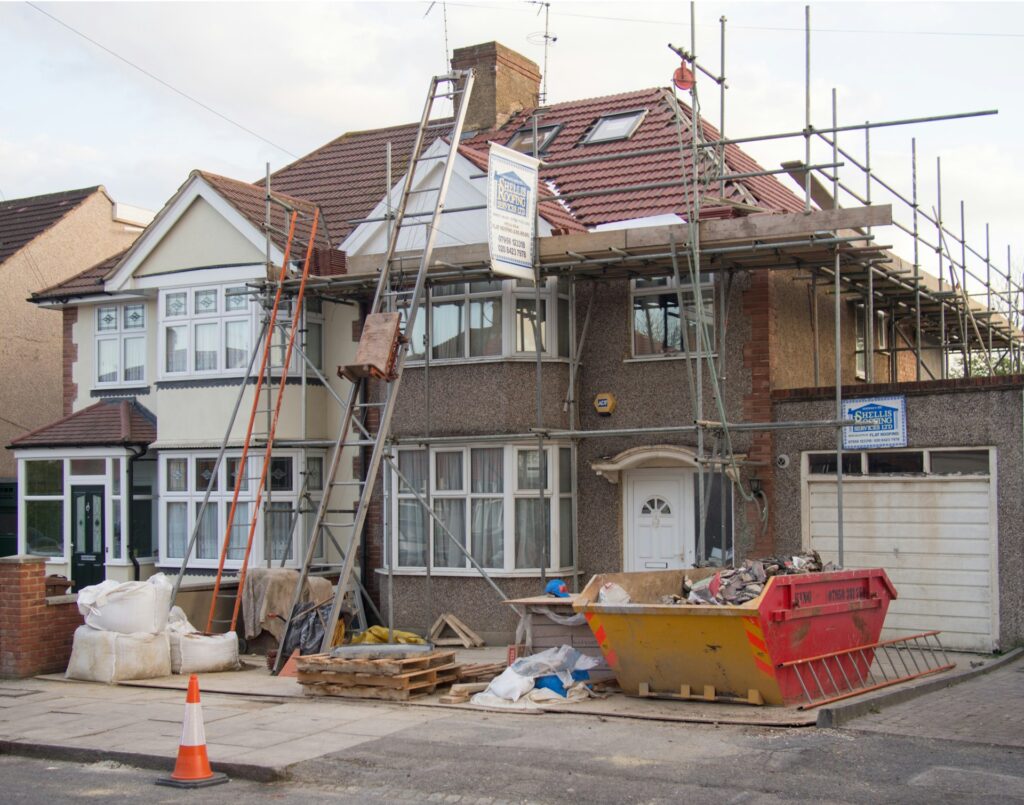When most people think of “home improvement,” they picture fresh paint, a statement light fixture, maybe that dream kitchen backsplash.
Not… sandbags by the front door or a weather radio on the counter.
But for homeowners in hurricane-prone areas—and even those miles inland—beauty and resilience have to share the spotlight. Hurricanes don’t just skim the coast. Their winds can tear shingles from a roof, their rain can creep into a foundation, and their aftermath can mean flooded basements, power outages, and fallen trees.
And here’s the thing: you don’t have to turn your home into a concrete fortress to keep it safe. With a few smart, strategic DIY projects, you can protect what matters and keep your space looking like the home you love—not a bunker.
Secure the Structure
When it comes to hurricanes, your roof and windows are on the front lines.
- Start with the roof: Look for loose or missing shingles and replace them now, not after a storm warning. Add hurricane straps, metal connectors that tie the roof to the walls, for extra holding power. You can find them at most hardware stores.
- Protect the glass: Storm shutters or impact-resistant windows block flying debris and may even lower your insurance premiums. If full replacements aren’t in the budget, cut plywood panels in advance, label them, and store the hardware so they’re ready to install fast.
- Don’t skip the garage: Standard garage doors can buckle under high pressure, letting wind rush inside and lift the roof. Retrofit kits with braces and stronger tracks solve that problem.
- Seal the gaps: Check weather stripping on all exterior doors. Replacing worn strips keeps out driving rain—and as a bonus, helps with energy efficiency year-round.
These small upgrades pull double duty: they protect you during a storm and make your home tighter and more efficient every day.
Manage Water From the Outside In
Standing water is sneaky—it can quietly cause serious damage if you don’t get ahead of it.
Keep gutters clear so rain can actually move through them, and push that water well away from the house. Downspouts should drain at least six feet out or straight into a rain barrel if you want to put it to good use. If your yard sends water toward the house, add a French drain or small swale to guide it elsewhere. And check the ground around your foundation—it should slope away so water naturally flows off toward the street or a garden.
Inside, a sump pump with a battery backup is worth every penny if your basement tends to flood—it’ll keep working even if the power’s out. Store things in plastic bins on shelves, not on the floor. If you have a crawlspace, keep vents clear and cover the ground with a moisture barrier.
Strengthen Community Ties
When a big storm comes through, the real test isn’t just about how strong your roof is—it’s about how connected your neighborhood is.
Swap phone numbers with the people next door, and make a plan to check in on each other if the power’s out or roads are blocked. In some neighborhoods, one person agrees to collect mail or clear driveways for anyone who has to evacuate. Small arrangements like this can make a huge difference when stress is high.
After the storm, working together—whether it’s pooling tools for cleanup or sharing a hot meal—can speed up recovery for everyone. And your help doesn’t have to stop at the edge of your street. Supporting hurricane donations through reputable organisations helps families you’ll never meet but who are facing the same challenges. Groups like the Red Cross use those contributions to provide shelter, food, water, medical care, and cleanup supplies.
Sometimes the most potent part of preparedness is knowing you’re not just protecting your own home—you’re part of a network that looks out for each other.
Prepare for Power Loss
When the lights go out, life gets tricky fast.
- Portable generator: Great for keeping the fridge, fans, and a few lights running—just always use it outdoors to avoid carbon monoxide buildup.
- No generator? No problem: Stock up on battery-powered lanterns, flashlights, and plenty of spare batteries. Solar phone chargers and hand-crank radios are also worth having.
- Blackout box: Keep all these items in one place so you’re not stumbling around in the dark trying to find them.
- Stay cool (or warm): Freeze bottles of water before a storm. They can double as ice packs or drinking water once they thaw.
Create a Family Emergency Kit
Think of this as your “grab-and-go” bag for any disaster, not just hurricanes.
Pack:
- Water and non-perishable food
- First-aid supplies
- Flashlight, radio, and extra batteries
- Whistle and manual can opener
- Copies of important documents
Don’t forget personal items like prescription meds, glasses, and pet food.
Pro tip: check your kit twice a year, maybe when you change the clocks, and replace anything expired or outdated.
Conclusion
Hurricane prep isn’t about fear—it’s about feeling ready. Every upgrade, big or small, adds protection, peace of mind, and often makes your home more comfortable year-round. So the next time you tackle a weekend project, choose one that’s both beautiful and built to last. When the storm comes, you’ll know you’ve done your part to keep your home, and the people in it, safe.

